Medical experts led by SickKids release new back-to-school recommendations
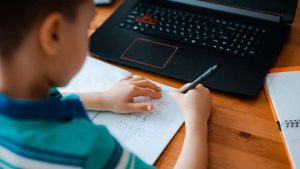
SickKids has released new proposed guidelines for reopening schools in Ontario come September, including recommendations like staggered lunch times, no large assemblies, and mandatory masks for older students.
The document, which was released Wednesday in collaboration with doctors from across the province, builds on COVID-19 recommendations the organization first released last month. It suggests various health and safety protocols for schools that take a student’s age and developmental considerations into account.
CBC News has learned Ontario Education Minister Stephen Lecce will unveil the province’s plans for the upcoming school year on Thursday.
The group says it is recommending the use of masks for high school students, with consideration for middle school students, whenever physical distancing can’t be maintained. Around 61 per cent of the authors agreed masks shouldn’t be required for elementary school kids.
“[Mask wearing] probably will diminish the infectivity of some individuals with COVID, however there are also a number of potential harms,” said Dr. Jeffrey Pernica of McMaster Children’s Hospital, saying that masks could distract and interfere with learning, especially for those with articulation problems, neurological issues, or kids who are learning a second language.
He also said that masks would have to be worn correctly in order to be effective, adding that it could be “impractical” for teachers to enforce.
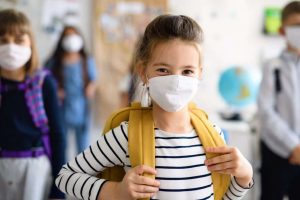
Most of the doctors also agreed that if community transmission is low, masking should not be mandatory for students returning to class.
“The lower the level of COVID in the community … the less benefit there is with masking — but the harms remain the same,” Pernica said. “This is why our recommendations are what they are right now.”
Pernica also added that if the levels change, so will the recommendations.
Premier Doug Ford addressed the masking recommendations in his news conference on Wednesday, saying he could “never argue against medical professionals.”
“I know [Education Minister Stephen Lecce] is going to be rolling out his plan this week,” said Ford, adding that Lecce has been taking advice from hospitals throughout the province, including SickKids and the University Health Network.
“They’re the experts when it comes to health and I highly recommend that we follow the health experts as we’ve been doing from day one.”
Ford also acknowledged he was “nervous” sending kids back to school, and called it “concerning” that two million kids would be returning to class, along with around 140,000 teachers.
He stressed the importance of getting the plans right.
“What’s even more concerning is if one of the kids has COVID and they bring it home to their parents or their grandparents,” he said.
“It’s going to be a tough challenge, but we’ll get through it. We’ll work together.”
Dr. Sean Ari Bitnun, a physician at SickKids, further emphasized that one single measure wasn’t going to mitigate things — success relies on the package.
“If we’re not focusing on any of the other recommendations, we are bound for disaster,” he said. “It really is the bundle effect that is going to create a safe environment for teachers and students.”
When it comes to physical distancing, the document says its role “should be discussed with students of all ages,” but added it would not be practical to enforce for kids in elementary school, especially during play times.
Instead, the report says “cohorting” — where kids would avoid mixing with other classes and grades — could be used as a strategy.
Since this would be difficult for high school students, the need for physical distancing would have to emphasized in older kids, the report says.
“Two metres is optimal, but the transmission at one metre is not significantly different,” said Dr. Charles Hui of CHEO.
Other recommendations include:
- Implementing strict screening for students and employees who are symptomatic or have been exposed to the virus.
- Teaching kids how to clean their hands properly with developmentally and age-appropriate material.
- Arranging classroom furniture to leave space between students.
- Having smaller class sizes.
- Cancelling choir practices, performances, and band because of the high risk of transmission from wind instruments.
- Continuing sports and physical education classes, but cleaning sports equipment and delaying team and close contact sports.
- Implementing a regular cleaning schedule.
The doctors said that it would be up to each school to figure out how to implement changes when it came to aspects like running school libraries or preventing masses of students from rushing out into the hallways at the end of the school day.
Dr. Bitnun also called for local public health units to closely collaborate with schools, saying that “there will undoubtedly be positive cases with the children and for teachers.”
‘Putting out fires as they come up’
The document stresses that opening schools safely — and keeping them open — will be directly impacted by how the virus is spreading in the community.
The recommendations reflect a mark of less than 200 new confirmed cases a day, and experts say that “may evolve” as the epidemiology of COVID-19 changes and new evidence emerges.
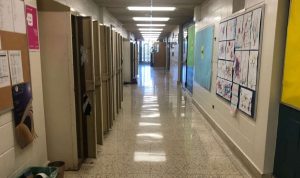
The doctors said they haven’t identified a specific level of community spread that, if breached, would means schools would have to close.
“A specific number in isolation doesn’t really have value,” said Dr. Bitnun. “My view, and I think this is shared by the others, is maybe the most important thing is to have a robust system of testing and contact tracing … in other words, we should focus on, to paraphrase, putting out fires as they come up rather than shutting down everything based on a specific number.”
Staying home could impact already vulnerable students
Back in June, experts said data showed children weren’t “super-spreaders” of the virus like they originally thought they would be, and added that there was evidence the virus presented less severely in kids.
The experts quoted in the document continue to push for full-time instruction, saying that remote learning would be “insufficient to meet the needs” of youth.
“Thinking about developmental impact and mental health impact has to be in the same equation as the potential harm of COVID,” said Dr. Sloane Freeman, lead pediatrician for the Model Schools Pediatric Health Initiative at St. Michael’s Hospital.
Going back to part time, they said, would affect working parents and caregivers, and mean bringing more people into the loop, like babysitters or grandparents.
Not going back, doctors say, could impact already vulnerable students the most.
“Medically complex children or children with severe underlying medical or behavioural illness, I think those families are disproportionately affected by what is going on in terms of isolation and trying to manage at home,” said Dr. Jeremy Friedman, a pediatrician at SickKids. “I think that those families, more than any others probably, will not be able to withstand the sort of time period we’re talking about for [when] this pandemic has moved into a more stable phase.”
“The sad irony is that I think that the children who are perhaps the most fragile and most at risk, those children, those families are the ones that probably need to have the normality and the routine,” he said.
School boards have until Aug. 4 to submit plans
Ontario school boards have until Aug. 4 to submit their reopening plans to the provincial government for approval.
The Toronto Catholic District School Board has already submitted its plans, which include running full classes.
The group involved in SickKids’ report includes officials, physicians and infectious disease specialists from SickKids, Unity Health, McMaster Children’s Hospital, The Children’s Hospital of Eastern Ontario, Holland Bloorview Kids Rehabilitation Hospital, Kingston Health Sciences Centre and London Health Sciences Centre.
CBC





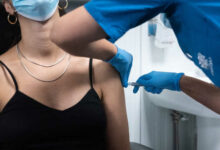
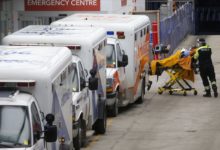
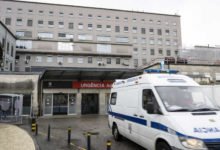
Redes Sociais - Comentários